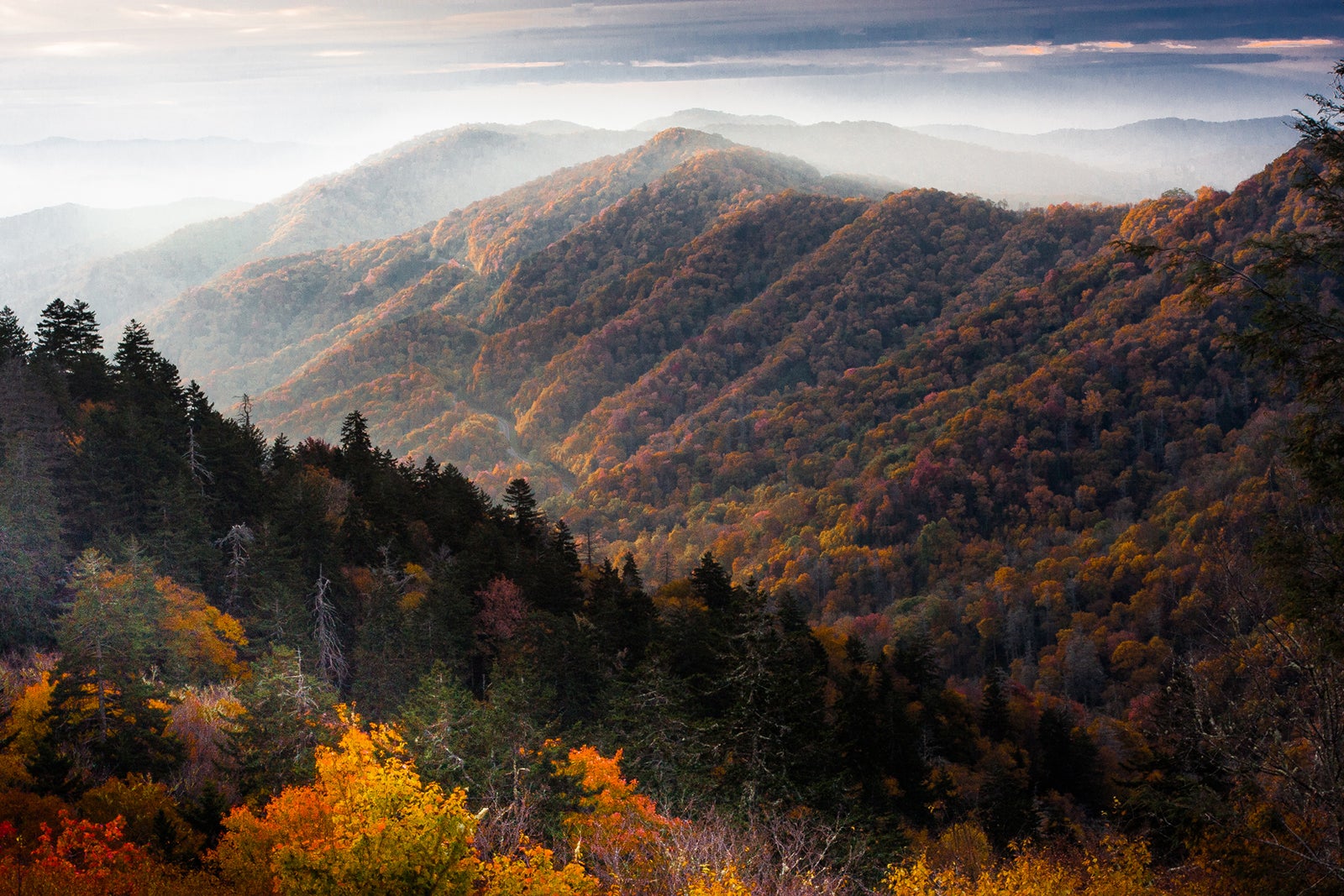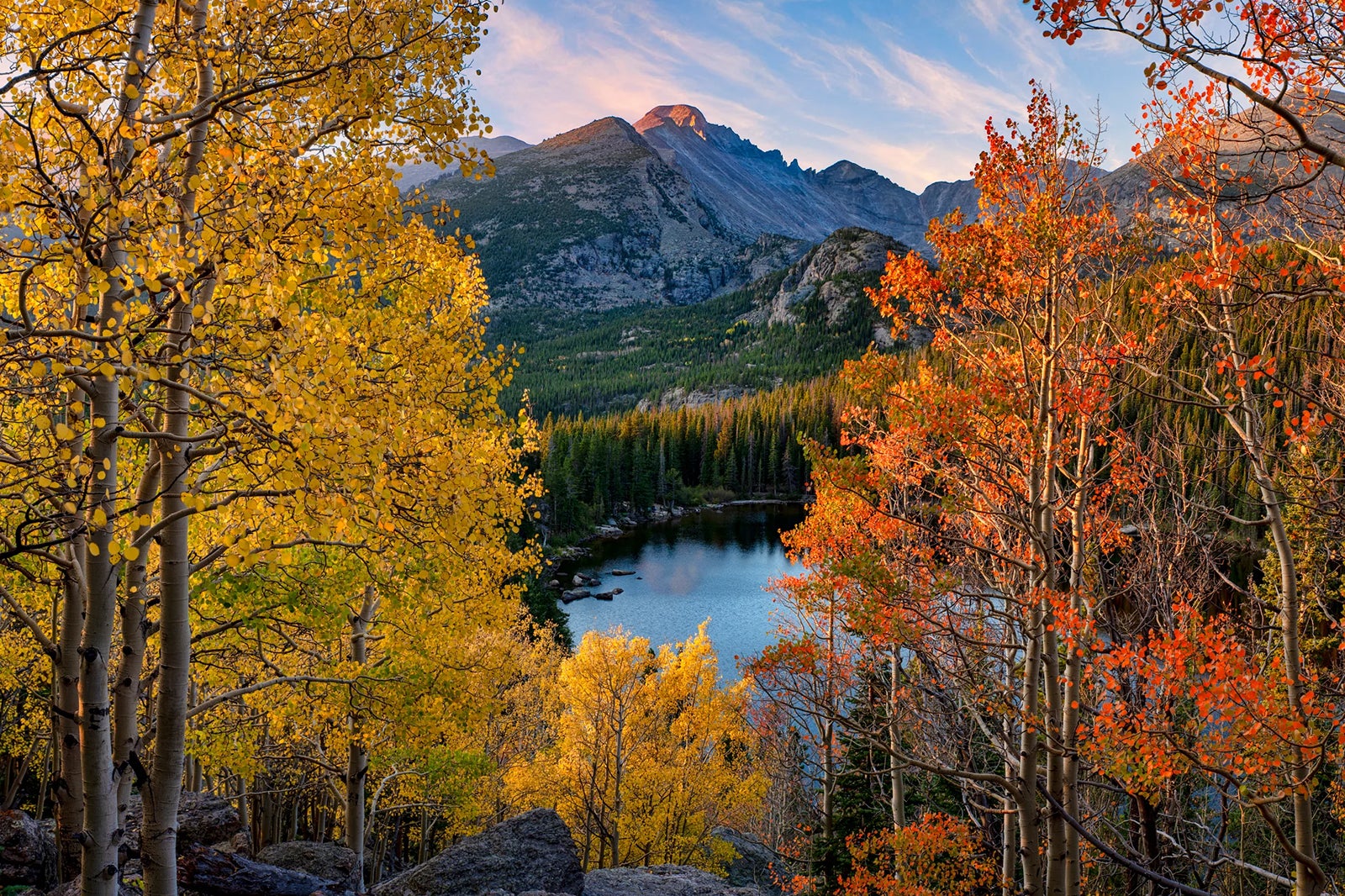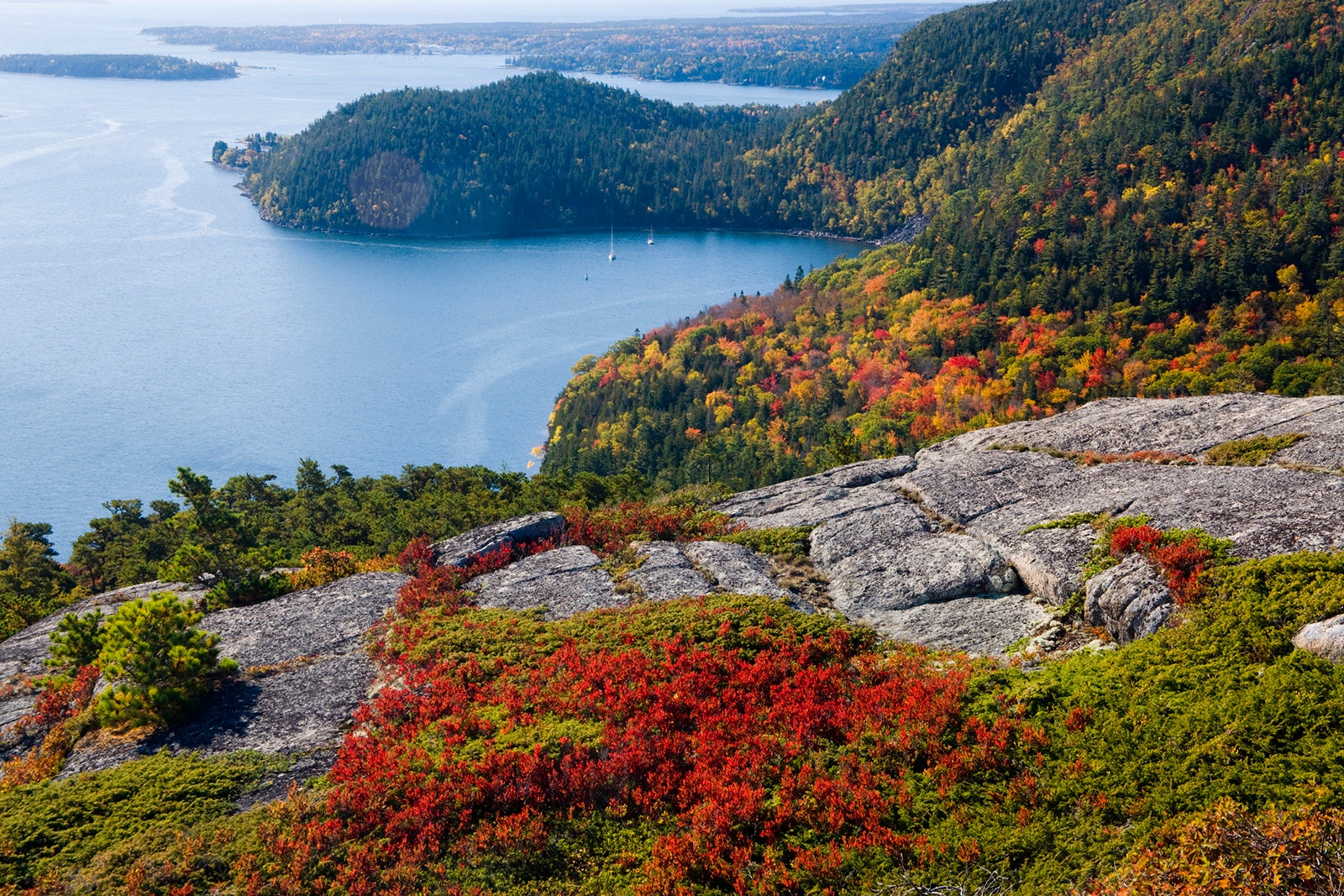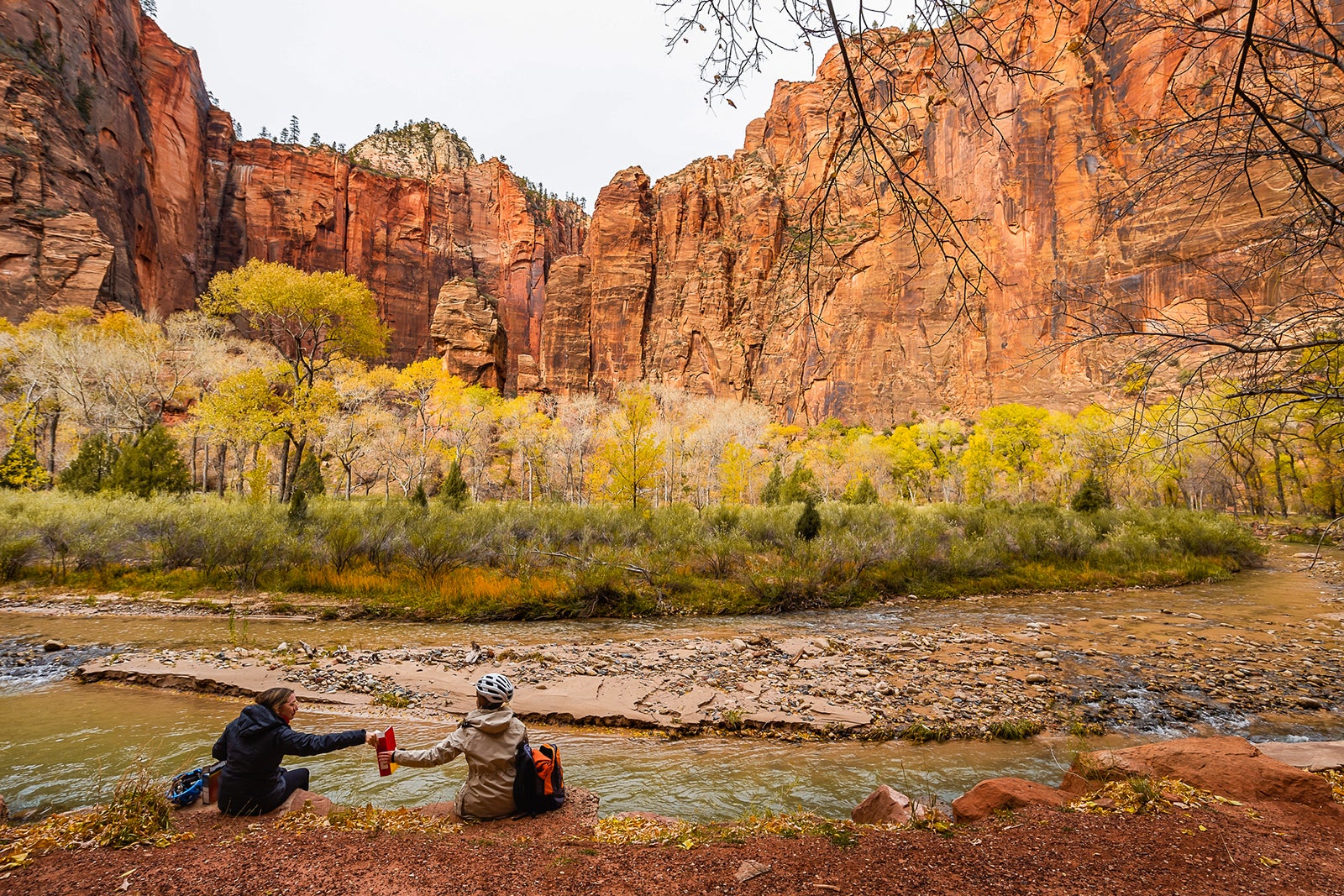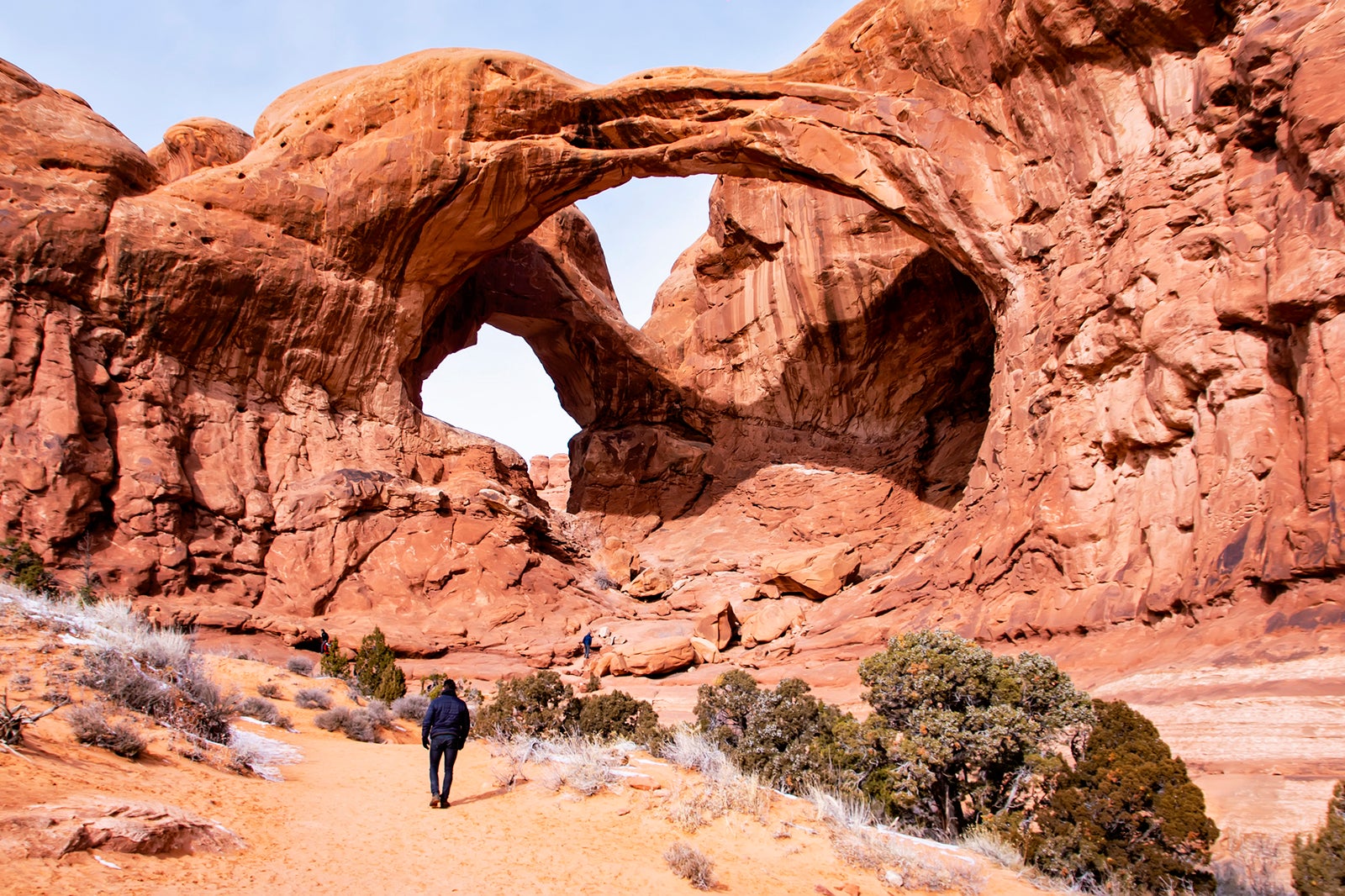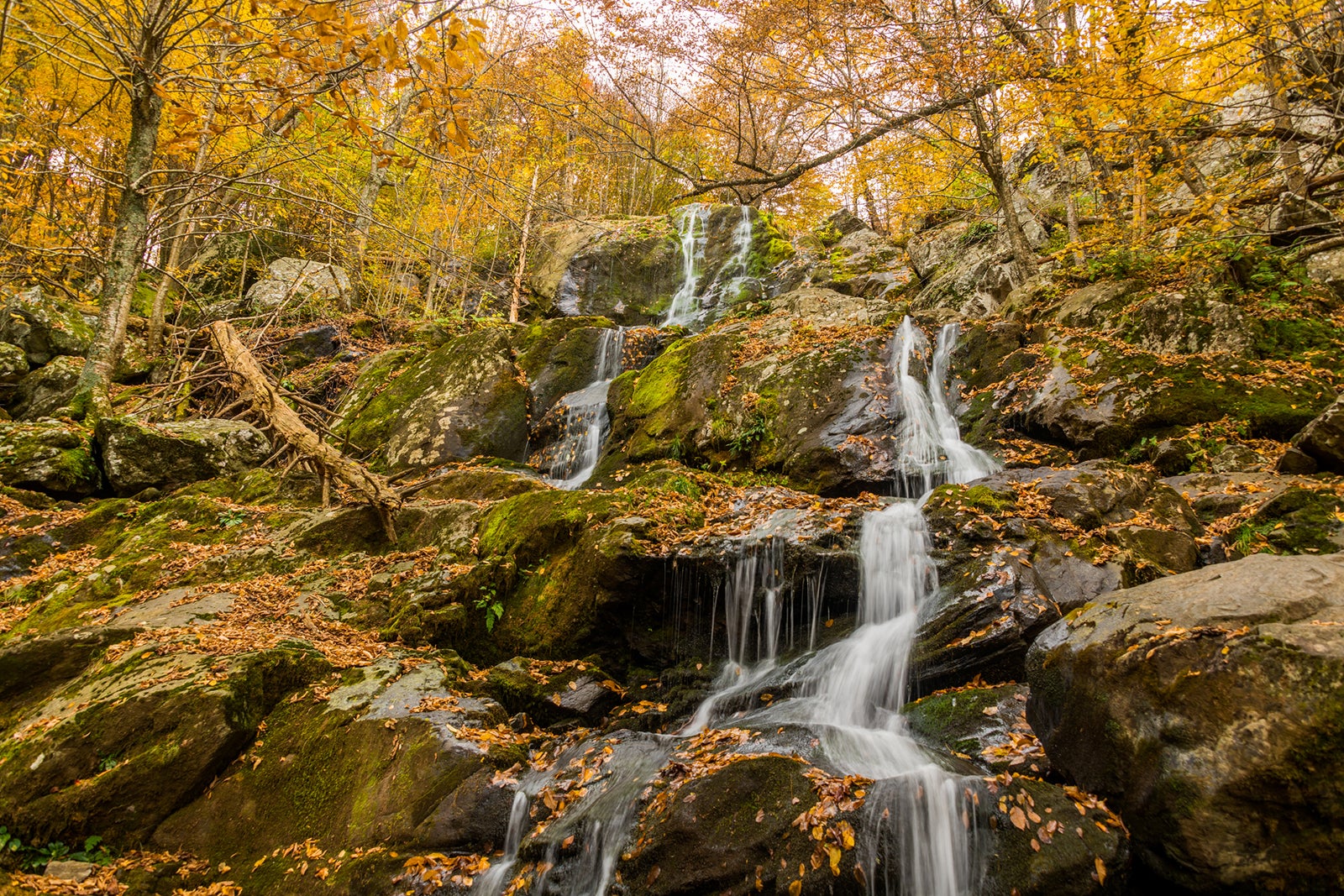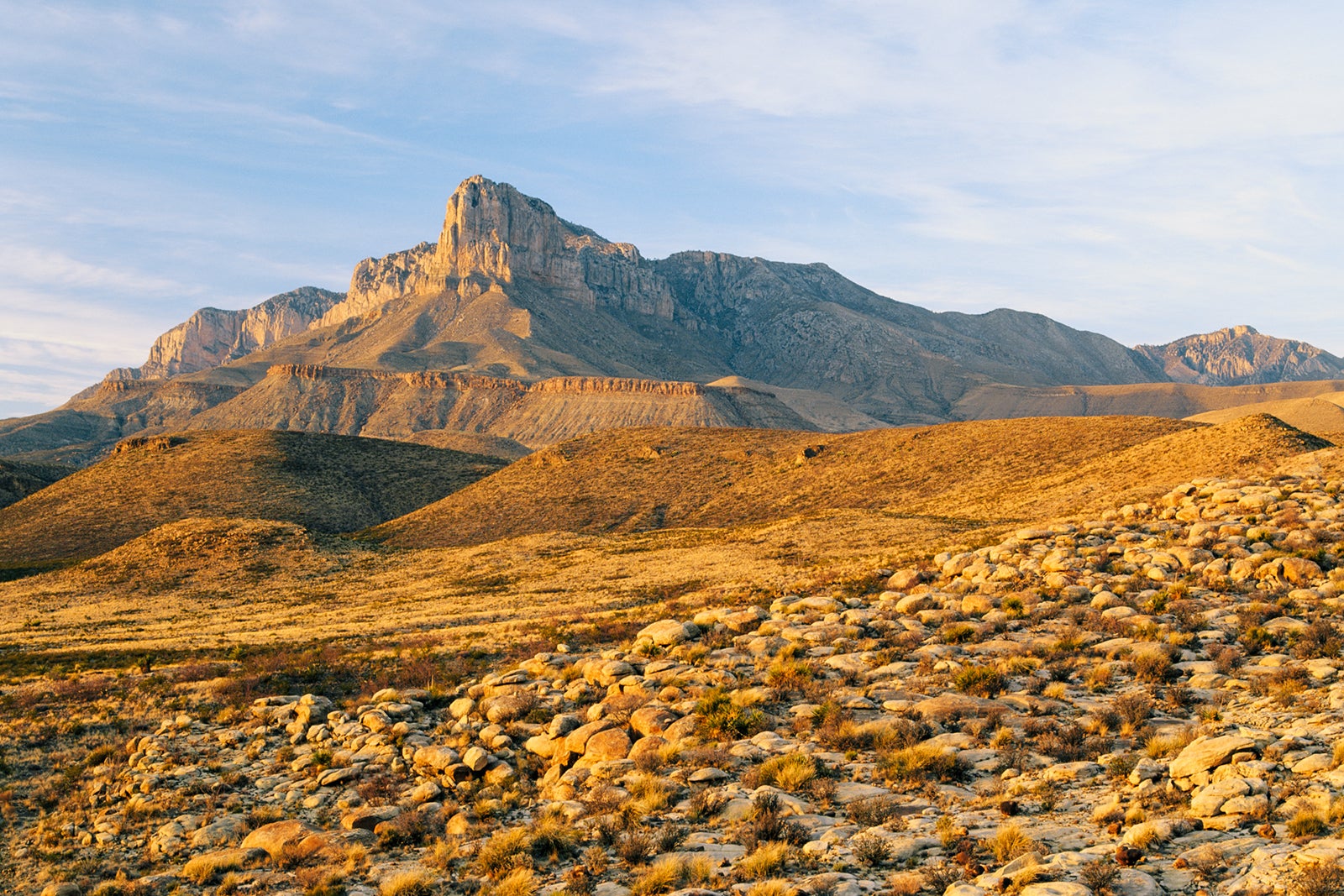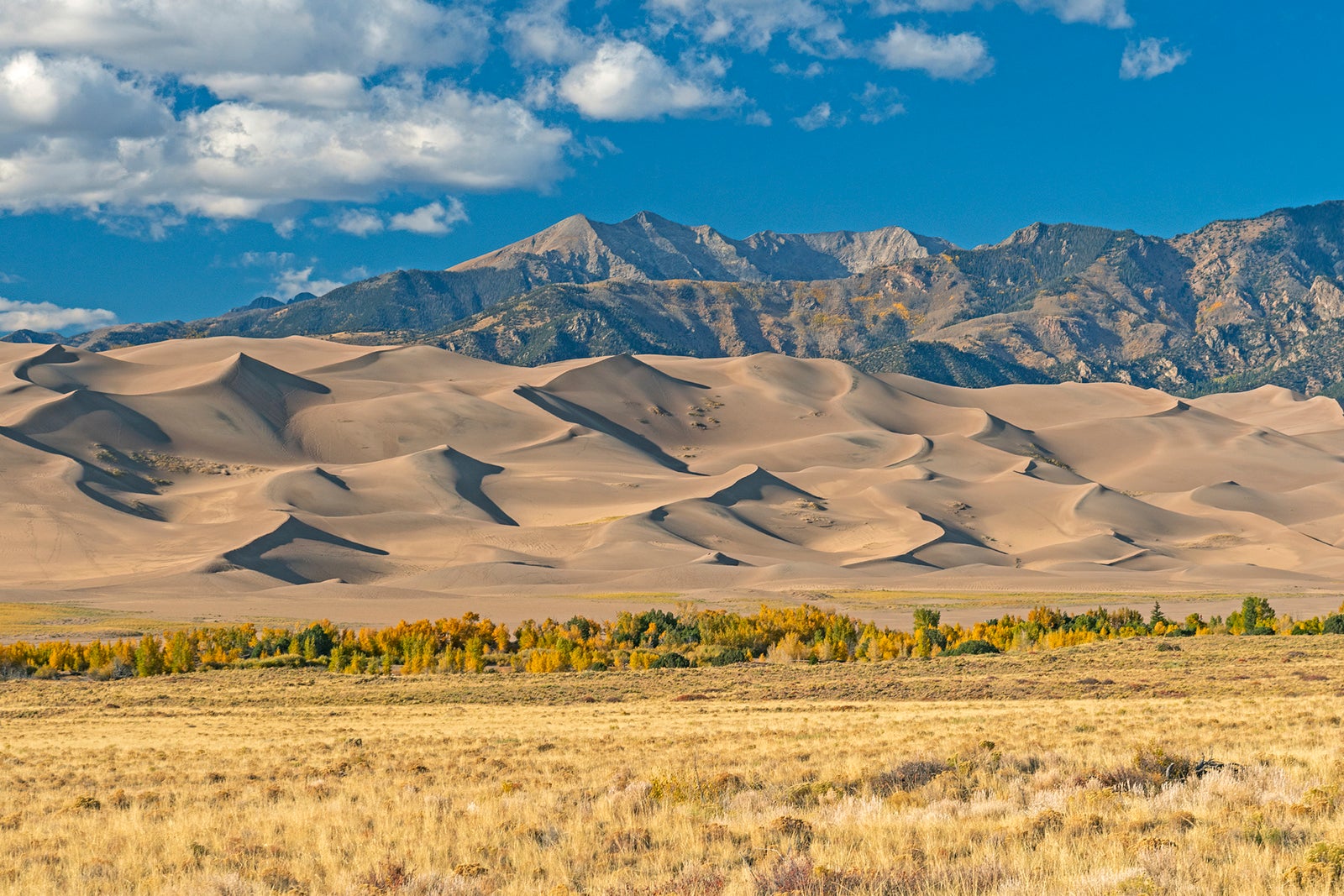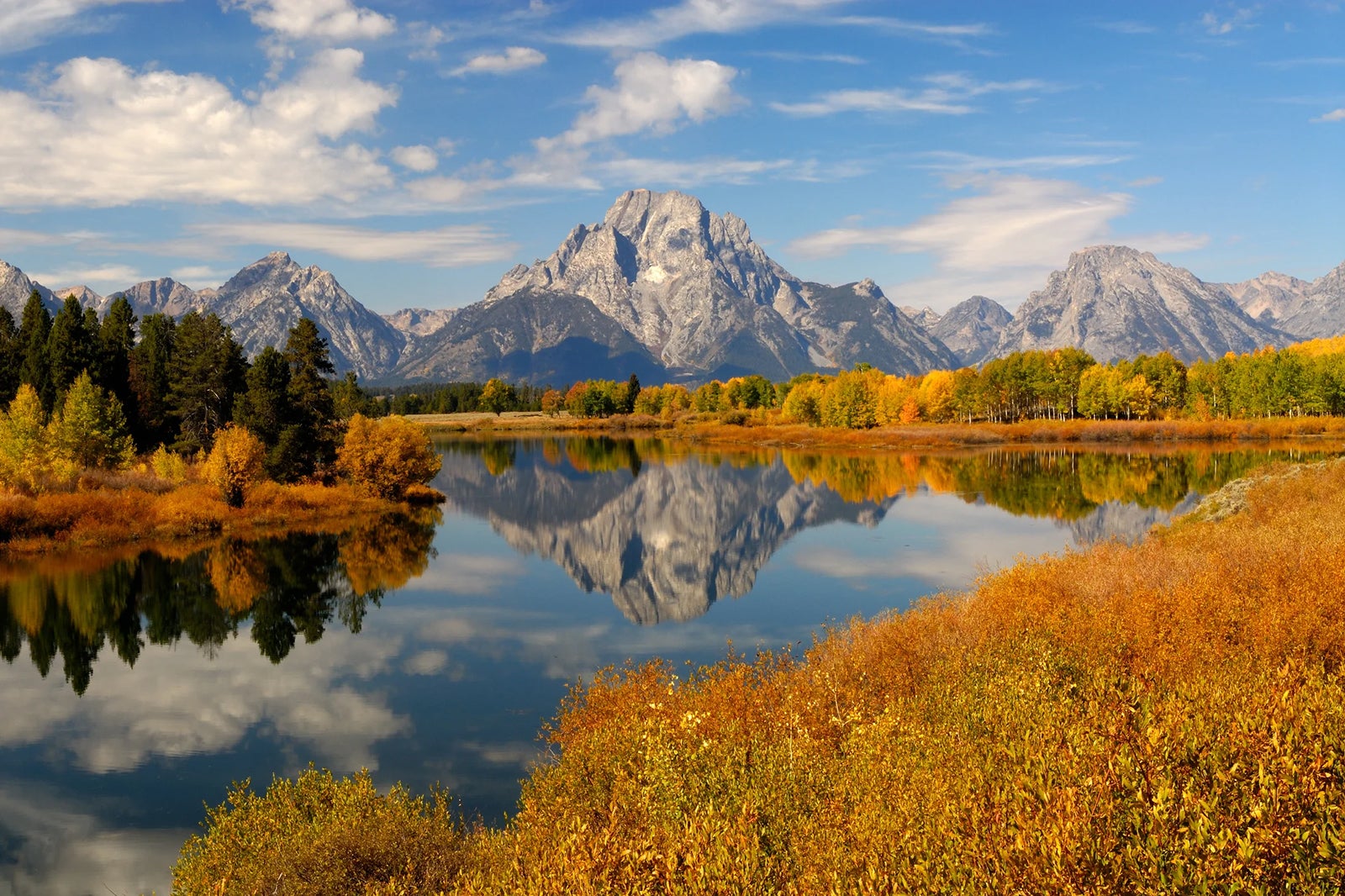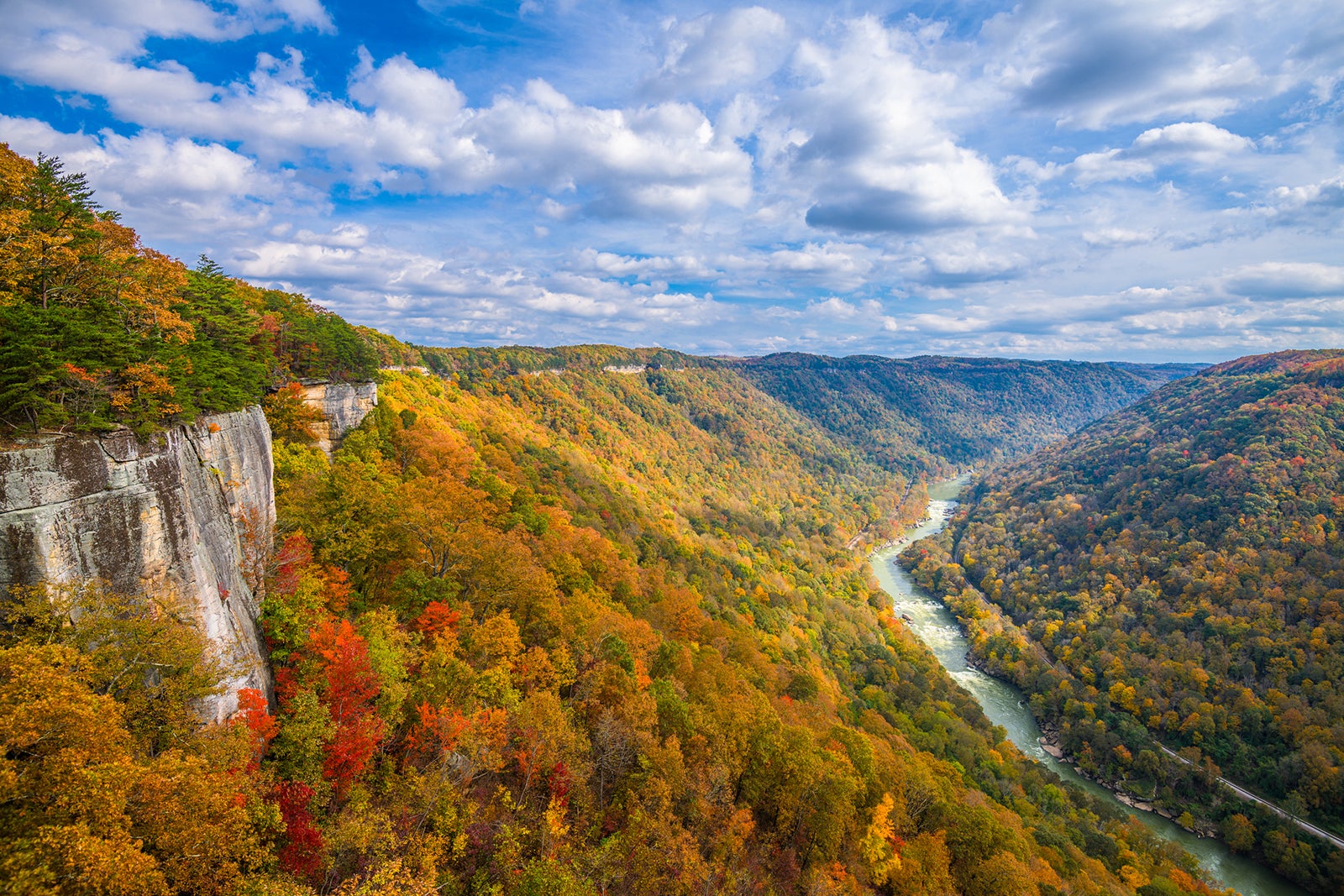The 10 best US national parks to visit in fall 2024
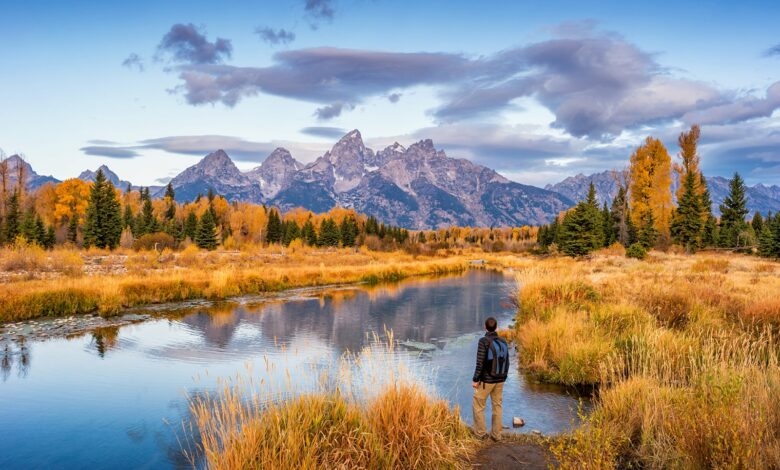
If you’re considering visiting a U.S. national park this fall, you’re in luck. There’s a secret many travelers with flexible schedules have long known: National parks are best in autumn.
Of course, that’s not true of every national park — more than a few are better at other times of the year. But, generally speaking, fall can be a spectacular time to visit the nation’s parklands. Not only have temperatures dropped, but crowds have also thinned, so you can enjoy the scenery without breaking a sweat or competing with other visitors for a photo.
Best of all, depending on when and where you travel, you may get the bonus of experiencing a vibrant fall foliage display. But remember: Snow can cause road closures at Glacier National Park, Yellowstone National Park and Rocky Mountain National Park as winter draws nearer. So, you’ll want to plan and get the timing right.
These are the 10 best U.S. national parks to visit this fall.
Related: The best places to travel in October
Great Smoky Mountains National Park
Fall is arguably the best time to visit Great Smoky Mountains National Park on the Tennessee-North Carolina border and take in the colorful display of sugar maples, hickories and more from the observation deck at the peak of Clingmans Dome.
Or, if you prefer a scenic drive, admire the autumnal hues from Cades Cove Loop Road, the Blue Ridge Parkway or the Foothills Parkway (also known as the “Tail of the Dragon”). Fall temperatures in the Smokies — with highs from the mid-60s to mid-70s in September and October — are also a great alternative to the oppressive heat that comes with summertime in Tennessee and North Carolina.
Be sure to stop by the Apple Barn Cider House in Sevierville, Tennessee, on your way out of the park for its world-famous apple cider, apple butter and pumpkin bread — all of which taste better in the fall when apples and pumpkins are in season.
Rocky Mountain National Park
Rocky Mountain National Park in Colorado is spectacular during the long, warm summer days, but it pulls out all the stops for travelers who visit in the fall. Beginning in mid- to late September, the weather cools down enough for a light jacket during the day, and the crisp evening chill demands a cozy jacket, a warm campfire and a steaming mug of hot cocoa.

Daily Newsletter
Reward your inbox with the TPG Daily newsletter
Join over 700,000 readers for breaking news, in-depth guides and exclusive deals from TPG’s experts
During those magical weeks when summer gives way to fall, the aspens are ablaze with shades of gold while other trees pepper the mountains and fields with orange, red and yellow pops. According to fall foliage prediction maps, peak fall colors will occur in the Rockies sometime between the last week of September and the first week of October.
Do keep in mind that the park has a timed-entry permit system that will remain in place for most areas of the park through Oct. 14. (Timed entry plus Bear Lake Road reservations will continue through Oct. 20.)
Another draw of fall in the Rockies is the elk rut, during which you can hear the elk bugle across the park and neighboring Estes Park. The town even hosts an annual Elk Fest with live music, Native American dancing and a contest to see who can do the best elk bugle imitation from Sept. 28-29.
Truthfully, fall is one of the best times to visit many parts of Colorado, so you’ll have your pick of natural wonders beyond Rocky Mountain National Park.
Related: From the Colorado Rockies to Utah’s red rocks: All aboard one of the only luxury trains in the US
Acadia National Park
It’s no secret that the Northeast has a leg up on much of the rest of the country when it comes to experiencing fall foliage at its finest. Acadia National Park starts cooling down in late August, and by early October, coastal Maine is usually deep into the peak of fall foliage.
As a bonus, beginning in early October and lasting until early March, Acadia is also the first place in the U.S. to experience the sunrise each morning from the 1,530-foot summit of Cadillac Mountain. (Just be sure to grab a required reservation to drive Cadillac Summit Road now through Oct. 27.)
As the weather cools off and Bar Harbor closes down, you can enjoy Acadia with fewer tourists, too — and even grab popovers at the Jordan Pond House restaurant before it shutters for the season in late October without enduring a multihour wait.
Check out Under Canvas Acadia, a luxury glamping property on the coast where rates start from $399 per night. Remember, it’s a seasonal property and will close Oct. 14.
Related: Glamping on points: Under Canvas is now live on World of Hyatt
Zion National Park
Zion National Park in Utah is one of the most popular parks in the U.S., so it can be quite crowded during the peak summer months. But in fall, especially if you can delay your visit until late in the season, the crowds taper off — along with the temperatures.
If you have your heart set on some of the more popular trails, such as Angels Landing or The Narrows, a less busy autumn day will be a far more enjoyable experience. (Avoid the fall break, when Utah schools let out for a four-day weekend or an entire week, often in mid- or late October.) Note that lottery-based permits are now required to hike Angels Landing and certain parts of The Narrows.
Fall colors make their way to Zion in late October and early November, and in November, temperatures often range from the 30s to the 50s, so pack plenty of layers. Also, remember that Zion’s shuttle buses run less frequently and for fewer hours each day as visitors disperse for the winter.
A great place to stay near Zion is the Springhill Suites Springdale Zion National Park, located in the park’s shadow. Rates start at $215 or 58,000 Marriott Bonvoy points per night.
Related: Exploring national parks: Where to stay using points
Arches National Park
Another Utah park best seen in autumn is Arches National Park. In addition to glimpses of changing leaves, the temperatures are much more tolerable, with highs in the 70s in October (compared to daily highs in the 90s from June through August). Trust us: The 3-mile hike to Delicate Arch is easier to manage when the air is cooler.
If you’re hoping to capture some amazing photographs, the autumnal light falling on red rocks is spectacular. You’re also more likely to see wildlife while camping in the area. Just remember to visit before or after those Utah school breaks: Your crowd-free shots will reward you for your efforts.
If you want to use points to stay in nearby Moab, Utah, you have many choices, including the Hyatt Place Moab for just $120 or 17,000 World of Hyatt points per night this fall. The more upscale Hoodoo Moab, Curio Collection by Hilton can be booked from $110 or 33,000 Hilton Honors points per night this fall.
Related: Explore Utah’s national parks with TPG’s guide to the ‘Mighty Five’
Shenandoah National Park
Shenandoah National Park in Virginia may not have the same nationwide recognition as Arches or Zion, but it has its own charms, especially in the fall.
Shenandoah is known for its fall foliage, which is predicted to peak in mid-October in 2024. The red, orange and yellow hues signifying the changing of the season can be enjoyed not only during hikes within the park but also from the serpentine Skyline Drive that runs 105 miles north and south along the Blue Ridge Mountains.
As an added perk, you can get some awesome baked goods at the end of a day of hiking. TPG senior writer Katie Genter has fond memories of epic blackberry pie here, so be sure and drop by a spot like the historic Skyland Resort at the highest point on Skyline Drive for that local specialty. If you’re looking for a place to stay, Skyland also has 178 rooms with fantastic views of the valley and great hiking trail access. Rates start at $192 per night, and the lodge is open for the 2024 season through late November.
Related: Here’s how you can visit national parks for free
Guadalupe Mountains National Park
Guadalupe Mountains National Park is on the border between Texas and New Mexico. It is home to the highest peaks in the Lone Star State, along with canyons, dunes, desert landscapes, clear night skies and a fossil reef.
The elevation in this park ranges from 3,000 to 8,000 feet, so it isn’t as hot in the summer as you might guess for West Texas, though summer can still be warmer and rainier on average than October and November.
A highlight of autumn in the Guadalupe Mountains is the kaleidoscopic colors you’ll find in McKittrick Canyon and Pine Canyon. Here, the bigtooth maple trees star in the colorful foliage that is predicted to peak during the first few weeks of November.
Guadalupe Mountains National Park isn’t all that close to, well, anything else, but it could make for a great add-on to a road trip that also includes one of the country’s newer national parks, White Sands, which is approximately three hours away in New Mexico.
Related: 6 things you should know before you rent your first RV
Great Sand Dunes National Park and Preserve
Not to be confused with White Sands National Park, you’ll find Great Sand Dunes National Park and Preserve in south-central Colorado.
These dunes cover about 30 square miles and soar to almost 750 feet, making them the highest dunes in North America. And while the dunes are the park’s star, you’ll also find lakes, waterfalls, mountains and forests in this park and preserve. The National Park Service says you’ll enjoy some of the best weather of the year here in September, with an average monthly high of 74 degrees and a low of 45.
Bundle up, and you can head outside after sundown to gaze at the velvety night sky. This is, after all, one of the nation’s Dark Sky Parks, meaning it’s an extraordinary destination for stargazing thanks to the dry air, high elevation and the Sangre de Cristo Mountains, which shield the park from light pollution emanating from nearby cities.
Grand Teton National Park
The Tetons are indeed grand in every way, and this Wyoming park is also very accessible if you can fly into Jackson Hole Airport (JAC) within the national park boundary at the base of the mountain range. If you make the trip, you can use Marriott Bonvoy points to stay in Jackson, Wyoming, at the SpringHill Suites Jackson Hole (rates start from $161 or 50,000 Marriott Bonvoy points per night) or The Cloudveil, Autograph Collection (rates start from $320 or 70,000 Marriott Bonvoy points per night).
The fall season in Grand Teton National Park runs from early September until mid-October, and according to fall foliage prediction maps, the foliage will peak around the second week of October. When the cottonwood trees along the Snake River and the aspens on the hillsides ignite with color, the animals also begin preparing for the oncoming winter.
You may hear elk bugling and even see them sparring with each other. Be aware that late fall visits here could be met with closed roads. For example, Teton Park Road closes to cars for the season each year from Nov. 1 until April 30.
New River Gorge National Park and Preserve
The country’s newest national park, 7,000-acre New River Gorge National Park and Preserve in West Virginia, can be visited any time of year — but it’s a standout destination in the fall.
Anglers catch fish such as walleye and bass in the New River, and on dry days, rock climbers can be seen ascending the more than 1,400 routes established on the park’s sandstone cliffs.
After the heat subsides, October is a particularly popular time to visit. It’s also when the annual Bridge Day event takes place (in 2024, on Oct. 19). During it, thousands of visitors congregate to walk across the park’s eponymous bridge and watch BASE jumpers and rappellers descend over the side of the bridge.
Those who visit the New River Gorge in the fall will be rewarded with stunning fall foliage that arrives first in the mountains and works its way down into the valleys throughout October.
Related: Your guide to exploring West Virginia’s New River Gorge National Park
Bottom line
It’s hard to go wrong with a trip to a national park during the fall. After all, September, October and November are the best times to get out there and enjoy the crisp, autumnal air before winter blankets everything with snow. Whether you’re seeking lower temperatures and smaller crowds or are purely in pursuit of peak foliage, pack your jacket, bring the camera and get ready to have an unforgettable trip.

